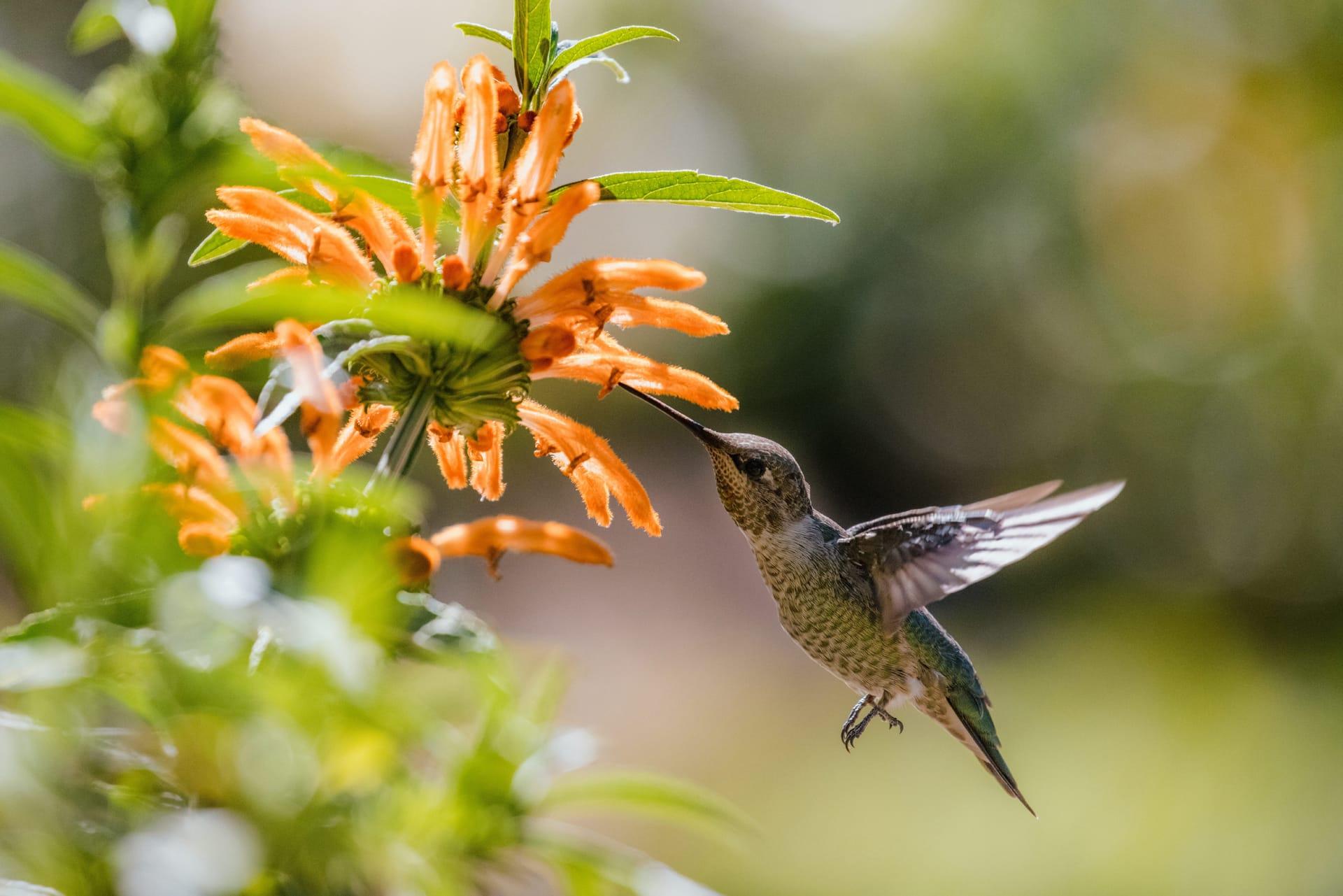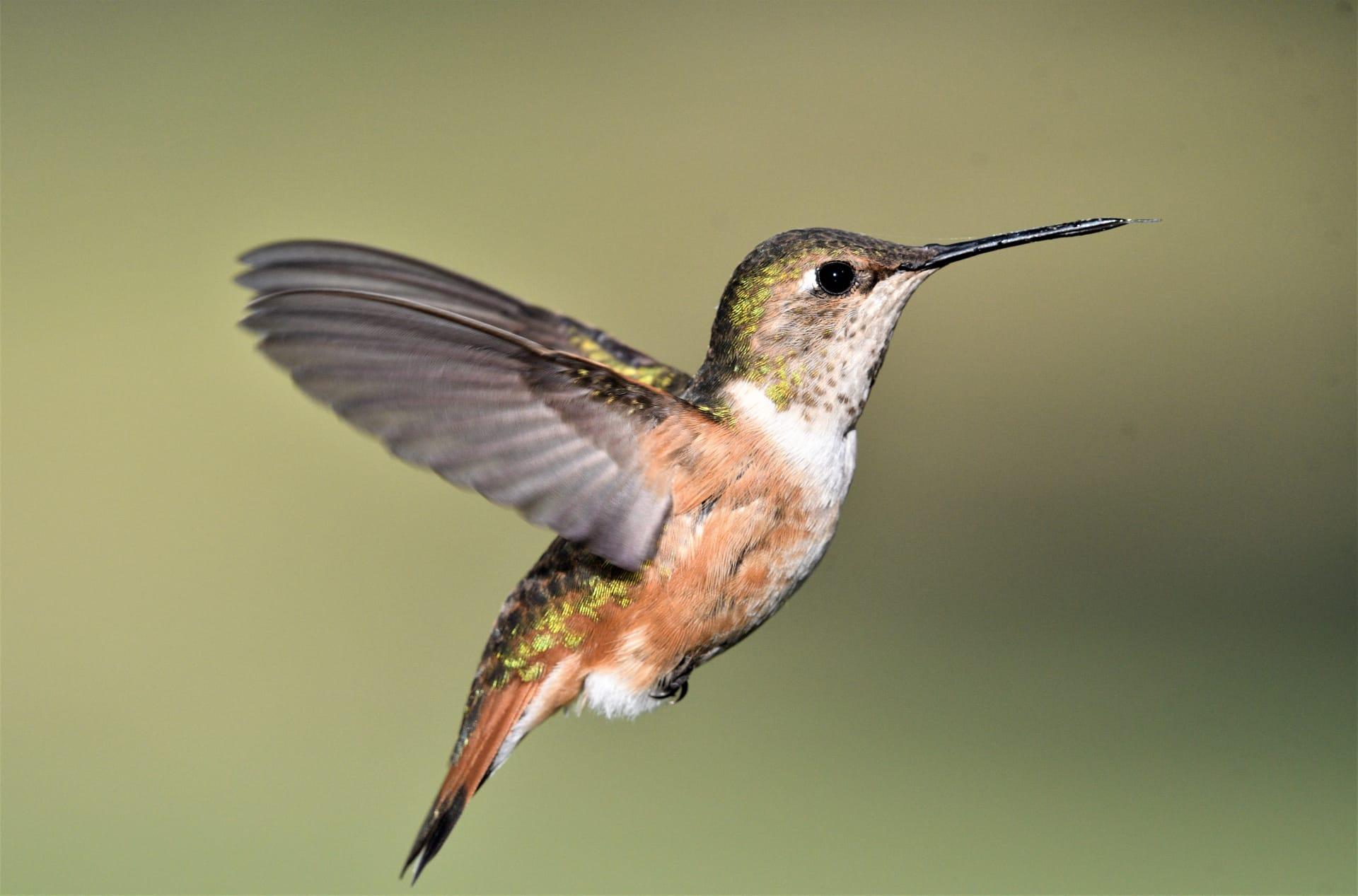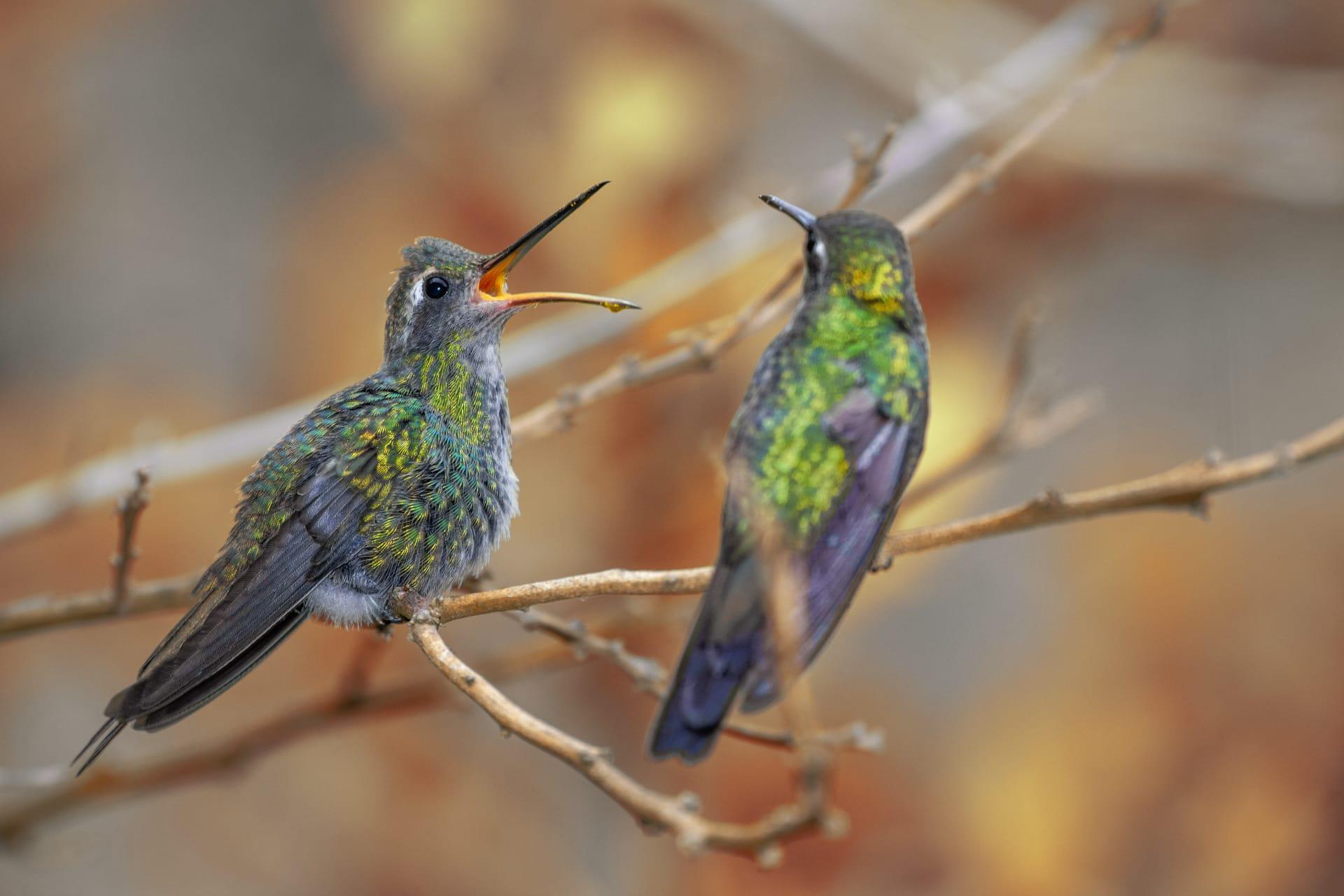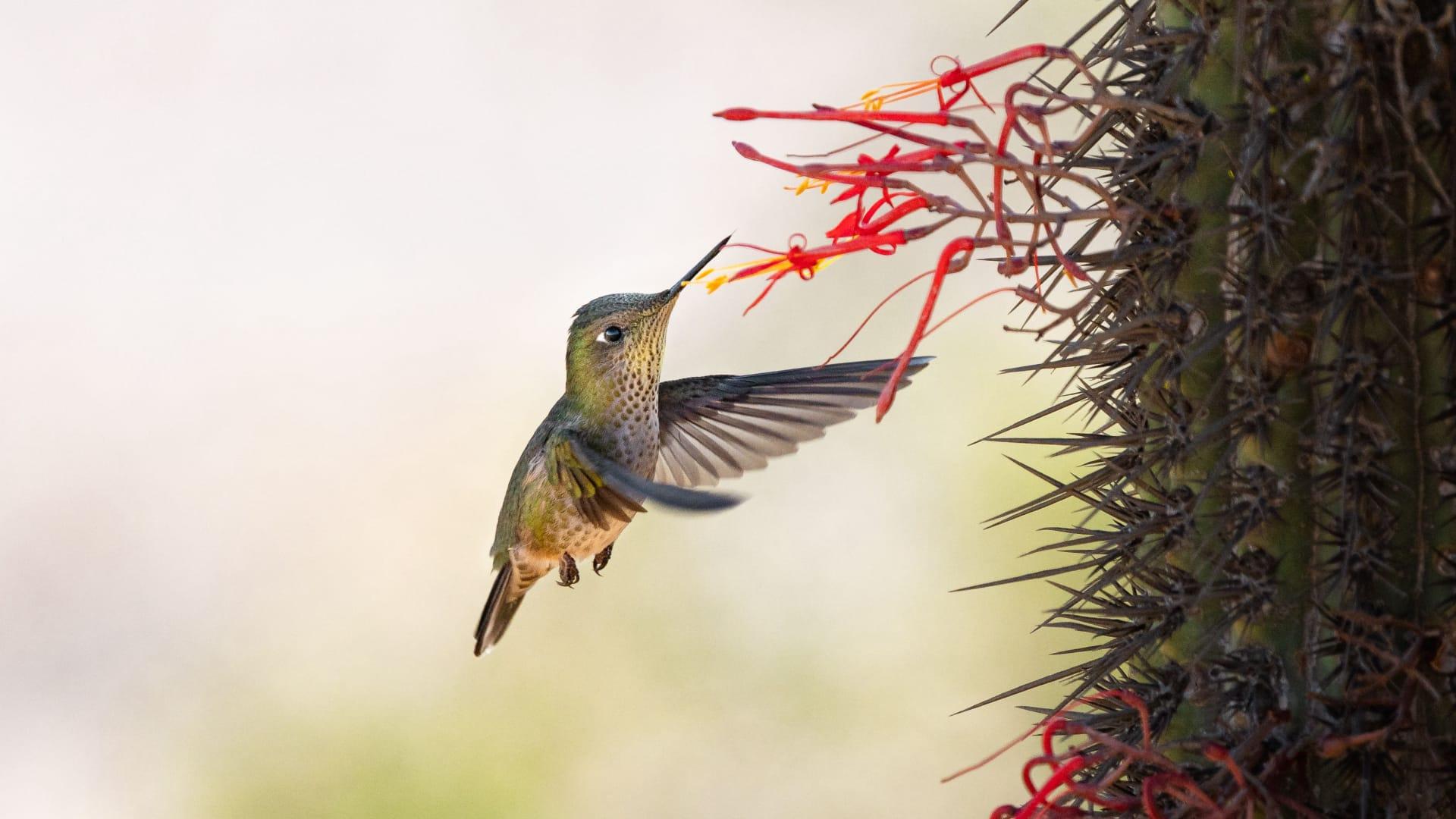1
Hummingbirds are renowned for their incredibly rapid wing flapping. These tiny birds can flap their wings at astonishing speeds, ranging from 50 to 80 times per second. This rapid motion enables them to hover in mid-air with an almost magical grace. The energy expenditure for this feat is immense; if a human burned calories at the same rate, they'd need to consume approximately 155,000 calories a day just to keep up!
Their heart rates are equally impressive, beating at up to 1,260 beats per minute during flight. This is necessary to support their high metabolism and rapid wing movement. In comparison, the average human heart rate is about 60 to 100 beats per minute. The hummingbird's heart can pump up to 1.5 times its body weight in blood per minute, a remarkable feat for such a tiny creature.

2
Hummingbirds are also unique in their flying abilities. They are the only birds that can fly backwards and even upside down. This agility is due to their rotatable wing joints, which allow for a range of motion unlike any other bird. This skill is particularly useful when they extract nectar from flowers, as they can easily adjust their position in mid-air to access different angles.
These birds have an extraordinary memory for locations. They remember every flower they've visited, along with how long it will take each flower to refill with nectar. Hummingbirds visit hundreds of flowers daily and can keep track of the nectar status of each, optimizing their feeding routes for maximum efficiency. This spatial memory is crucial for their survival, especially during migration periods.

3
Hummingbirds have a unique way of sleeping, called torpor. During torpor, their metabolic rate drops to 1/15th of its normal rate, their body temperature can fall to as low as 54 degrees Fahrenheit, and their heart rate decreases dramatically. This state allows them to conserve energy, especially in cold nights or when food is scarce. It's akin to a mini-hibernation that can last for hours.
Their tongue is a remarkable piece of natural engineering. Unlike most birds, a hummingbird's tongue is forked and works like a tiny pump. It uses capillary action to draw nectar up into their mouths. This efficient mechanism allows them to feed quickly and effectively, a necessity given their high energy requirements. Each lick of their tongue can be up to 13 licks per second when feeding.

4
Hummingbirds play a vital role in the ecosystem as pollinators. While feeding on nectar, their heads come into contact with flowers' reproductive parts, transferring pollen from one bloom to another. This pollination is crucial for the reproduction of many plant species. Remarkably, certain flowers have evolved to specifically cater to hummingbirds, with colors and shapes that attract these birds.
Despite their small size, hummingbirds are long-distance champions. Some species, like the Ruby-throated Hummingbird, migrate over 3,000 miles between their breeding grounds in North America and wintering areas in Central America. During this journey, they can fly non-stop for up to 18 hours, covering vast distances over open water, a feat that seems almost impossible for such tiny creatures.

5
Hummingbirds have an incredibly fast metabolism, the highest of any homeothermic animal. To support this, they consume an average of their own body weight in sugar each day. They primarily feed on nectar, which provides them with the necessary sugar for energy, and insects for protein. This diet requires them to visit hundreds of flowers every day.
They also have a unique feather structure. Hummingbird feathers are iridescent, meaning they reflect light in such a way that the colors change depending on the viewing angle. This iridescence is not due to pigment, but rather the microscopic structure of the feathers, which manipulates light. This results in their vibrant, shimmering colors that can range from bright greens and blues to radiant reds and purples, making them one of nature's most colorful birds.